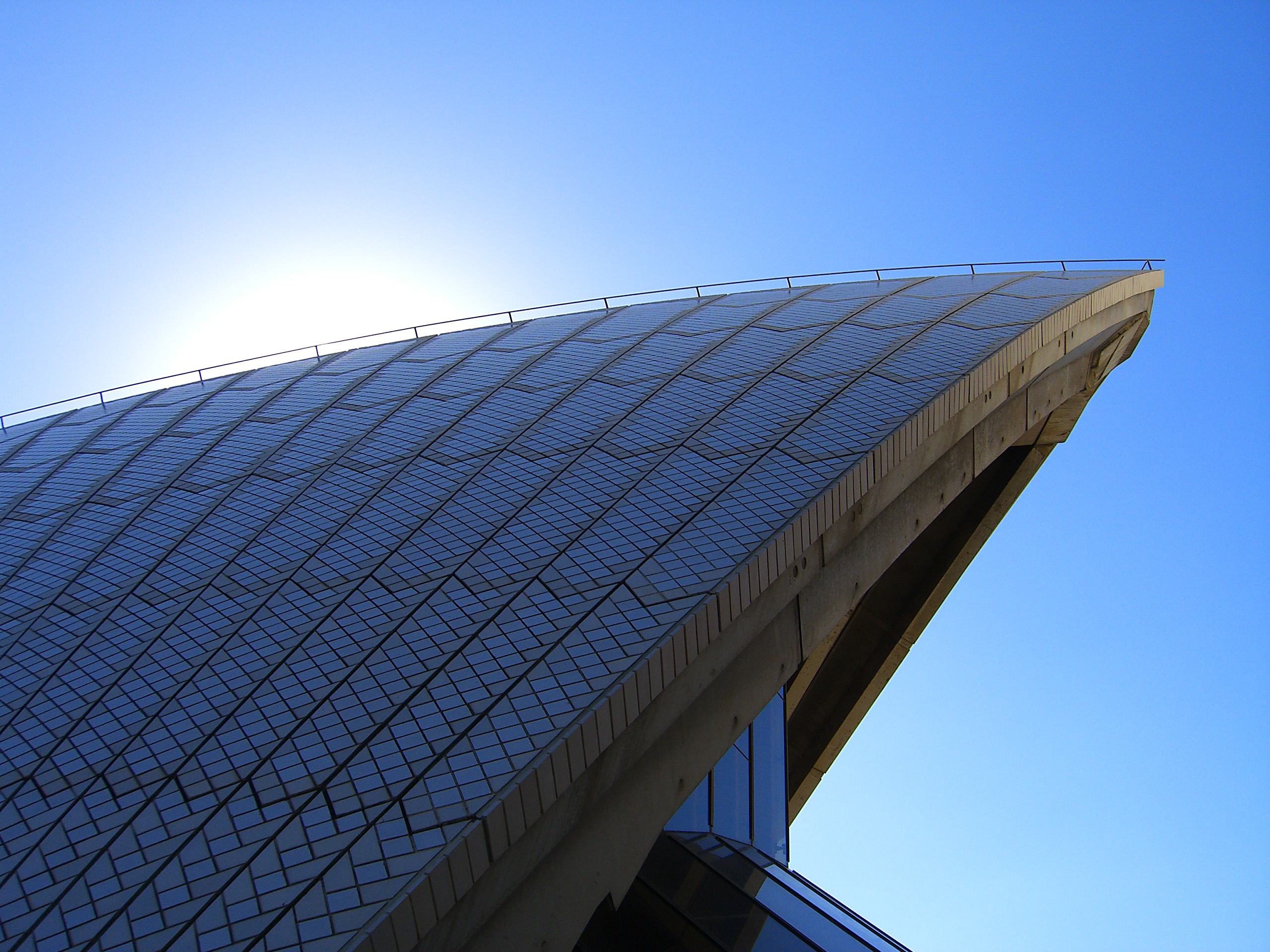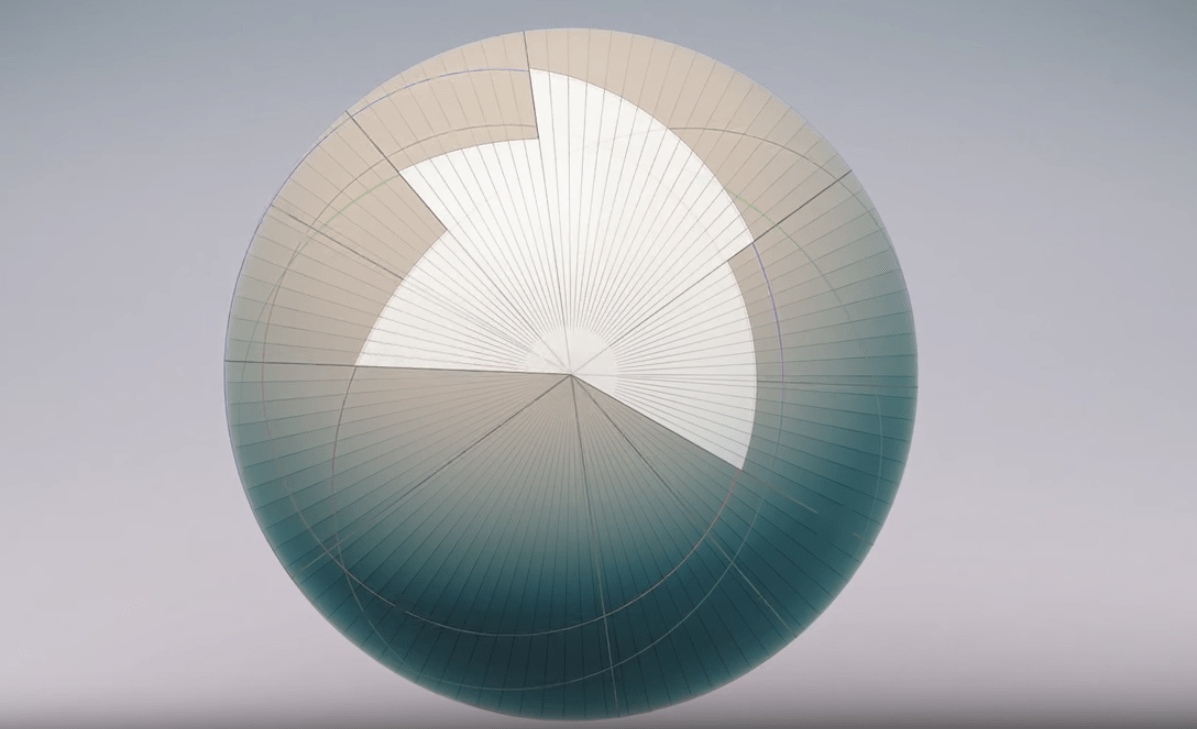
Design And Construction Of The Sydney Opera House Design House
This animation describes the shells of Sydney Opera House as they are derived from spherical geometry. The sequence resolves into the cover of the the Yellow.

DECEMBER 2017 SYDNEY spherical 420 x 180 degree panorama the Opera House of Sydney
This animation describes the shells of the Sydney Opera House as they are derived from spherical geometry and resolving into the cover of the Yellow Book w.

19 Facts About Sydney Opera House That'll Make You Go "Huh" Architecture concept diagram
The Spherical Solution, which defines the final form of the roof of the Sydney Opera House, is one ideal example from many of the use of natural forms in Utzon's approach to architecture. By defining parts of the surface of the sphere that best suited the existing shapes of the shells, each new form could be extracted.

VIEW STOCKHOLM on Instagram "One of Stockholm's most iconic buildings and renowned landmarks
On 29 January 1957, when Jørn Utzon's sail-like sketches were announced as the winning design for the Sydney Opera House, Utzon had a problem — he didn't know exactly how he would build them. The problem still wasn't solved two years later when construction began on 2 March 1959.. Instead, with shells having a common spherical geometry.

DE LA INDAGACIÓN A LA CONCRECIÓN Dibujo de arquitectura, Diagramas de arquitectura, Dibujos de
Spherical is a brand new work, brought to you by the fabulous Flying Fruit Fly Circus, Australia's National Youth Circus. Prepare to be amazed by the mind-blowing tricks, the intricate juggling acts, and the nail-biting aerials inspired by the curves of the Sydney Opera House sails for their 50th anniversary.

Utzon's Sphere. Sydney Opera House. How it was designed and built (Signed) — Pallant
Spherical is a brand new work, brought to you by the fabulous Flying Fruit Fly Circus, Australia's National Youth Circus. Prepare to be amazed by the mind-blowing tricks, the intricate juggling acts and the nail biting aerials inspired by the curves of the Sydney Opera House sails for our 50th anniversary. Get ready for this ensemble of young.

DECEMBER 2017 SYDNEY spherical 420 x 180 degree panorama Harbour Bridge and the Opera House
If you are into visiting historical sites, especially Grand Opera houses of Europe, this is a MUST SEE. With a seating capacity of 1,100 - it is truly a grand opera house. The renovation done years ago is still in tact and everything looked spectacular right down to the seat cushion fabric. The gold leaf and murals on the ceiling are amazing.

Sydney Opera House projection of the Spherical Solution YouTube
As construction of the podium began in Sydney, Jørn Utzon and his team of architects back in Hallebaek explored how to build the Opera House's shell-shaped roof. Between 1958 and 1962, the roof design for the Sydney Opera House evolved through various iterations as Utzon and his team pursued parabolic, ellipsoid and finally spherical.
.jpg)
Spherical
The building is gobsmackingly beautiful from the outside, even more so when lit up at night. The inside does not disappoint, it's truly magnificent. The production we saw was by the Bordeaux ballet company and it was superb. Thoroughly enjoyable experience in a very grand building indeed.

Sydney opera house building an icon
Various myths surround the discovery of the so-called Spherical Solution, Utzon's unified answer to the problems of buildable shells. The iconic sculptural form of the Sydney Opera House essentially relies on the form of these shells, so the importance of finding the best solution to the roof cannot be underestimated.
/utzonSOH-821907-56aadd173df78cf772b49827.jpg)
Sydney Opera House An Architectural Biography
122 - 128 cm. 134 - 140 cm. 146 - 152 cm. This model is a recreation of the Spherical Solution model that was used by Jørn Utzon to describe the way in which the geometry of the concrete ribs of the Opera House sails were derived from one single sphere. This breakthrough allowed the ribs to be prefabricated from a repetitive geometry.

Sydney Opera House
Describing how the shells of the Sydney Opera House are derived from spherical geometry

Sydney Opera House projection of the Spherical Solution YouTube
1.1 THE SYDNEY OPERA HOUSE 2.0 THE FUTURE 2.1 APPROACH 2.2 PRINCIPLES 3.0 DESIGN PRINCIPLES 3.1 OBJECTIVES 3.2 FUNDAMENTAL PRINCIPLES 3.3 SYDNEY OPERA HOUSE DESIGN PRINCIPLES 3.4 PROCESS CONTENTS. 2 1. 3. denominator, the same spherical surface to deal with, with a similar curvature throughout. This was an elegant solution to a construction,

Wooden Model showing a ‘geometrical solution for the shells’, Sydney Opera House, Sydney by Jø
Chapter 11: The Spherical Solution (Part 1) By the middle of 1961, almost three years had passed since Utzon had put a plastic ruler on a table and bent it to the forms he wanted expressed in the roof. It was this act which determined the shape of the roof in the Red Book. Three years - yet an adequate engineering solution had still not been.

Spherical
The Spherical Solution would become the binding discovery that allowed for the distinctive characteristics of the Sydney Opera House to be realised finally. The vaulted arches, the exceptionally beautiful finish of the tiles, and the timeless sail-like silhouette of the Sydney Opera House all derive from Utzon's decision to create the form.

SPHERE Sphere, Opera house, Cloud gate
The Sydney Opera House is one of the 20th century's most iconic buildings. It broke new ground for design and engineering around the world.. This became known as the 'spherical solution' and eventually 2,194 pre-cast concrete sections each weighing 15 tons were formed on site to create the flowing roofline people recognise today.